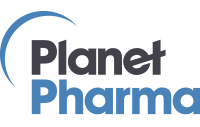When most people think of the job market over the last 20 years, the rise of technology comes to mind. Yet there’s one area of tech that’s been booming under the radar – life sciences. In California alone, there was a 4% increase in life sciences jobs in 2020, up more than 12,000 from 2019. This increase isn’t surprising given the 88% jump in biotech R&D jobs between 2001 and 2018, equating to 1.7 million jobs across the broader life sciences industries.
The pandemic only accelerated this growth, and as a result, life sciences IT has become one of the hottest roles on the market. And while people have some broad knowledge of life sciences and an understanding of Information Technology (IT), they may not know what happens when you marry those fields together. Below, we explain what life sciences IT is, what roles are popular right now and what companies and their recruiters seek in new candidates.
What is R&D IT?
These days, life sciences is ripe for digital disruption. Increasingly, patients are more involved with their care and anticipate a certain level of convenience, personalization and transparency that only big data analytics can provide. Companies are sitting on massive data sets they have yet to fully utilize. This data could suggest new markets to explore, ways to enhance employee productivity and methods of streamlining product delivery. Most importantly, data equips leadership with the information they need to make high-quality decisions.
R&D IT combines innovation in the medical, biological or pharmaceutical fields with information technology. Some people who work in R&D IT implement and maintain advanced analytics software in the cloud. More technical members of R&D IT teams layer statistical tools atop the software stack to derive new insights for future product development or to find ways to speed up time to market. Others use analytical insights to set realistic timelines and budgets so they can run important R&D projects more effectively. To stay competitive, life sciences companies need to hire the right people to fill these vital roles.
Which life sciences IT roles are hot?
Currently, there’s high demand for Scientific Business Analysts, Project Managers and Bioinformaticians. Let’s break each of them down:
- Scientific Business Analyst. These folks are responsible for many typical business analyst functions, such as gathering requirements, capturing and processing data, reporting and analysis, and visualization. The catch is that all the data they are working with is specific to R&D. This means that recruiters can’t just find someone with a BA background and plug them in. Candidates need to have worked with scientific or biological data. Oftentimes, employees with these roles have backgrounds in genomic data and DNA data sequencing, with a Bachelor’s or Master’s degree in Biology, Chemistry or a similar life sciences field.
- Project Manager. Pharma and biotech companies are working on multiple projects simultaneously, and someone has to make sure they are delivered successfully, on time. Like conventional project management, life sciences project management involves planning, systematizing and directing projects within a certain budget and scope. The caveat is that these Project Managers must be attuned to the strict regulations within the pharma or biotech space. Life sciences Project Managers must know the ins and outs of R&D compliance and design their project plans with that in mind.
- Bioinformatician. Much of life sciences revolves around data. As such, the need for more technical, data-focused roles is steadily increasing. Bioinformaticians use statistical methods to process huge, complex biological data sets. To be a Bioinformatician, you typically need a Master’s or Ph.D. in Bioinformatics or a similar field. In these roles, Bioinformaticians use software to surface insights in DNA, RNA, or other protein sequences that can be leveraged for new products and can inform the company’s overall go-to-market strategy.
What are recruiters looking for?
Recruiters will typically vet candidates based on their education, as most employers have strict requirements, especially for high-level positions. Applicants will often need postgraduate degrees from universities or research institutions. But apart from schooling, applicants should demonstrate real-world experience with project management and compliance tools specific to the pharmaceutical or biotechnology space they hope to work in. Familiarity with FDA and FTC regulations as well as a Laboratory Information Management System (LIMS) is trending to become an industry standard. Top-of-the-line candidates usually have experience managing teams and might even have PMP or PMI certifications.
Advice for R&D IT candidates
Our biggest piece of advice for R&D IT job seekers: Know your audience. Life sciences recruiters and employers are looking for certain skills, certifications and experience. Unlike technology companies, they heavily prefer longevity and progression in your career. Emphasize those in your resume and cover letter. Beyond that, take the time to do your research.
For instance, if you’re applying to Moderna, be able to talk about their other products besides the Covid-19 vaccine. If you’re talking to Johnson and Johnson, look at their entire pipeline and suite of products and be able to explain why you’d be the best fit for their late-stage oncology or immunology therapies. Staying on top of new technologies and developments is important, too. In an interview, showcase your knowledge of current events and tie in why you believe IT, bioinformatics, or business analysis is a vital component of the employer’s particular R&D ecosystem.
A huge opportunity
R&D IT candidates need to know their stuff. A large portion have advanced degrees, are proficient in compliance and regulatory tools and have proven ability to lead teams. Understandably, it’s tough to find people that fit this criteria — it’s a very distinct niche.
That being said, this dearth of qualified candidates presents an enormous opportunity for job seekers who already possess those characteristics. Once life sciences companies find people they like, they give them the responsibilities, benefits and whatever is necessary for retention. R&D employees tend to have an extremely enviable growth trajectory, getting to try new things in tangential positions or moving up the ranks quickly in their vertical.
Skyrocket your career by applying to a R&D IT position today.
Photo credit: Canva
by Jordan Adkins, R&D IT Recruiter, Planet Pharma
How to Create an Effective Pharmaceutical Resume
Your resume is often the first impression you make on a prospective employer in the pharmaceutical industry, so it’s essential to ensure it effectively showcases your skills, experience, and qualifications. Here are some tips for creating an effective pharmaceutical resume that stands out from the competition: Tailor Your Resume to the Job: Customize your resume…
Planet Pharma EU’s October MVP: Mona Azhari
We’re highlighting some of the amazing people who make up our Planet Pharma. Today, let’s get to know Mona Azhari with our Planet Pharma EU team. Name: Mona Azhari Job Title: Recruitment Team Lead How does it feel to be recognised by your colleagues and what was your secret to success this month?…
Planet Pharma EU’s September MVP: Alastair Aitken
We’re highlighting some of the amazing people who make up our Planet Pharma. Today, let’s get to know Alastair Aitken with our Planet Pharma EU team. Name: Alastair Aitken Job Title: Principal Recruiter How does it feel to be recognised by your colleagues and what was your secret to success this month? Feels…



